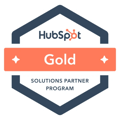Avoid the Sales Email Follow Up Flop!
Probably one of the most frustrating scenarios in sales is when you have a conversation or exchange with a prospective customer, follow up with a brilliant email containing a meeting request, information, or pricing, et cetera, and then—nothing
Your Follow-Up Flopped!
- Why didn’t they respond?
- Why haven’t they replied?
- I supplied all the information!
- What else could I have included?
- What more can I do?
- Should I nudge them again?
- Tap, Tap, Tap, Is this thing on????
Wouldn’t you like to be a fly on the wall when your prospect receives your email to understand exactly what they’re thinking and why you aren’t getting a response?
Well, consider me your fly. While you’re wondering what else you could have said in that email or what details you could add,
This is what your prospect is thinking:
- Ding–ugh, another email
- Reading, “Good morning, hope you’re doing well, thank you for the call …” Get on with it...
- Skimming…what’s relevant here?
- “Blah blah blah” click here, open that … not right now
- “Would love to” – I’ll bet you would
- Too much work … moving on to put out real fires
- Email sits in inbox … indefinitely
If you’re cringing right now, I feel you. This is me as a buyer, and this is the response of hundreds of buyers I’ve polled as to how they feel about follow-up and the sales process. Most of the time,
Your follow-up flops because of these 3 reasons
1. Your follow up response is too much “work” to process (too long, too many details, too much information, asking too much, et cetera). Reading your email and deciphering what information is relevant to a decision and what actions to take—should be quick and easy to move forward, not like reading a novel.
2. The buyer has other “fish to fry first”—meaning, most everyone in decision-making capacities is juggling direct reports, running to meetings, being interrupted every 3 minutes, and trying to move their own work forward. Their “lack of urgency” has nothing to do with you and everything else on his/her plate.
3. They weren’t that interested and suggested you follow up as a way of disengaging from the call/conversation. Ouch. This one is a huge waste of time and clogs your funnel with junk.
It’s rarely a deliberate decision to ignore you. It’s usually a byproduct of the prospect’s busy workload combined with a follow-up message that is too vague, general, busy, or complex.
How do you avoid Follow-up flops?
Before you hang up or finish that meeting, ASK ANOTHER QUESTION! Clarify. Quantify. Qualify.
Ask one more question to gain the additional details that tell you exactly how you follow up with what they need or want to know, and why they would respond to your follow up.
Phone calls or initial meetings usually end with:
• Send me more/some information.
• Send me a proposal/pricing/contract.
• Send me times for a meeting.
• Send me some examples.
Before you leave the present conversation, ASK ANOTHER QUESTION so you can have productive follow-up:
Clarify what the customer needs from you:
- What information would be helpful for your next steps? Give specific examples.
- Do you need information to compare to existing solutions or other vendors?
- What other divisions/departments need information to have input on this purchase?
Quantify what products, services, or dollars they are expecting to see in a proposal and/or why they would like to see it (don’t send pricing or a proposal blindly)
- Before I send pricing/packages—is there a budget range you’d like to work within?
- What would you like to see in a package?
- Which options would you like to consider in the proposal?
- What will you be evaluating or comparing the pricing against (ROI, existing vendor, multiple proposals)
Qualify what the buyer will do once they receive your follow up
- I’ll follow up with a recap email tomorrow, how much time do you need to discuss with your team?
- After I send you the recap/pricing/examples—how would you like to set the next step?
- If I assemble these details, can we agree on a follow-up call/meeting to make sure we’re on the same page or to help me know where you are in the process?
And, by the way, you may have figured out already that you don’t have to stop at just ONE question. Keep going until you paint a tight picture of exactly what the follow-up should be and have an agreement about what the prospect expects and will do on his/her end.
In my experience, sellers usually don’t ask enough questions. We get what’s called, “happy ears” because we hear a few signals that the buyer is interested and in our enthusiasm, forget to listen for other clues as to how to proceed or cues that tell us the prospect is really just trying to dis-engage from us and not potentially interested.
Gather More Insights, More Information, and More Context
You'll avoid the sales email follow-up flow and your follow up will be specific, meaningful, and has a timeline that reflects the customer’s buy-in. Without it, you’re usually left twisting in the wind after you send that email with all those details—and the buyer doesn’t respond.
Don’t jump off the high dive and do a giant Follow-Up Belly Flop! Avoid that by asking more questions: Clarify, Quantify, and Qualify!
.webp?width=12693&height=4513&name=Sauce%20Logo%20Dark%20Ht%20(1).webp)

.webp?width=180&height=64&name=Sauce%20Logo%20Dark%20Ht%20(1).webp)











